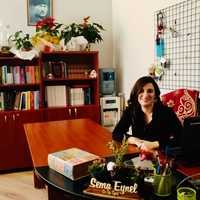
Michał Németh
I am a historical linguist dealing with Turkic languages and Hungarian. In recent years, my main interests have become focused, on the one hand, on reconstructing the linguistic history (historical phonology, phonetics, and morphology) of the Karaim language on the basis of critical editions of newly discovered texts written in Hebrew script, and, on the other hand, on documenting the spoken Karaim language through linguistic fieldwork. In 2012, I launched and led a project aimed at determining how valuable the Polish private collections of Karaim sources might be. As a result, in the years 2012–2016 more than 460 manuscripts kept were discovered and catalogued, among them some of the oldest known texts written in Karaim.
Currently I am the Principal Investigator of the ERC project entitled “(Re)constructing a Bible. A new approach to unedited Biblical manuscripts as sources for the early history of the Karaim language” (https://karaimbible.filg.uj.edu.pl/en_GB/). It is a research project that aims at preparing a number of comprehensive critical editions and grammatical descriptions of carefully selected Karaim Biblical texts from the 17th–20th centuries. The research will be supplemented with palaeographical descriptions. To achieve the research objectives an on-line platform will be created which will be a complex research instrument providing a highly interconnected network of data based on the technologies commonly referred to as Semantic Web.
Another main field of interests of mine is etymological research, in particular the investigation of the oldest layer of Slavonic and Turkic loanwords in Hungarian.
I am Full Professor in the Institute of Linguistics, Translation Studies, and Hungarian Studies at the Jagiellonian University in Kraków (and the Head of the institute's Research Centre for Language Documentation). In years 2015–2017, I was an Alexander von Humboldt Foundation Research Fellow at the Institut für Slavistik, Turkologie und zirkumbaltische Studien (Abteilung Turkologie) of the Johannes Gutenberg University of Mainz. I studied Turkish (M.A.) and Hungarian (M.A.) philology and hold a PhD degree (2011) and a (post-doctoral) habilitation degree (2020) in Linguistics. In 2020, I was elected ordinary member of Academia Europaea (Section Classics and Oriental Studies).
Currently I am the Principal Investigator of the ERC project entitled “(Re)constructing a Bible. A new approach to unedited Biblical manuscripts as sources for the early history of the Karaim language” (https://karaimbible.filg.uj.edu.pl/en_GB/). It is a research project that aims at preparing a number of comprehensive critical editions and grammatical descriptions of carefully selected Karaim Biblical texts from the 17th–20th centuries. The research will be supplemented with palaeographical descriptions. To achieve the research objectives an on-line platform will be created which will be a complex research instrument providing a highly interconnected network of data based on the technologies commonly referred to as Semantic Web.
Another main field of interests of mine is etymological research, in particular the investigation of the oldest layer of Slavonic and Turkic loanwords in Hungarian.
I am Full Professor in the Institute of Linguistics, Translation Studies, and Hungarian Studies at the Jagiellonian University in Kraków (and the Head of the institute's Research Centre for Language Documentation). In years 2015–2017, I was an Alexander von Humboldt Foundation Research Fellow at the Institut für Slavistik, Turkologie und zirkumbaltische Studien (Abteilung Turkologie) of the Johannes Gutenberg University of Mainz. I studied Turkish (M.A.) and Hungarian (M.A.) philology and hold a PhD degree (2011) and a (post-doctoral) habilitation degree (2020) in Linguistics. In 2020, I was elected ordinary member of Academia Europaea (Section Classics and Oriental Studies).
less
Related Authors
Henryk Jankowski
Adam Mickiewicz University in Poznań
Timur Kocaoglu
The National University of Uzbekistan
Dorota Cegiołka (formerly Smętek)
Adam Mickiewicz University in Poznań
Anna Sulimowicz-Keruth
University of Warsaw
Murat Koçak
Gazi University
Murat Ceritoğlu
Izmir Katip Celebi
CiHAN DOGAN
Adnan Menderes University
sema eynel
Pamukkale University
Ebru Çetin Milci
Stanford University
InterestsView All (45)










Uploads
CV by Michał Németh
Books by Michał Németh
Middle Western Karaim dialects. The author provides a systematic
description of sound changes dating from the 17th–19th-centuries and
reconstructs their absolute- and relative chronologies. In addition, the
main morphological peculiarities are presented in juxtaposition to
Modern Western Karaim data.
The textual basis for this historical-linguistic investigation is a critical
edition of pre-1800 Western Karaim interpretations of Hebrew religious
songs called piyyutim (149 texts altogether). The reason behind this
choice is that some of these texts are among the oldest known Western
Karaim texts in general, and that until now no study has brought the
Karaim translation tradition in this genre closer to the reader.
Description taken from https://www.harrassowitz-verlag.de/The_Crimean_Karaim_Bible/titel_5820.ahtml.
The present publication appears to be the first critical edition of this type of texts written in this particular dialect. Previous editions of south-western Karaim manuscripts either concerned very short texts from Halych or were prepared with no intention of being professional.
The linguistic description of the manuscripts aims to present a grammar of the manuscripts’ language. It is complemented with a separate chapter dealing with the Slavonic structural influences exerted on the authors’ idiolects, and with the lexicon of the texts. A separate part deals with the orthography and the features of the writing itself. The transcription and translation of each manuscript are preceded with a concise palaeographic description and a summary of the content. The work closes with a glossary, several in¬dexes, maps, and the facsimile of the manuscripts.
Papers by Michał Németh
and translators involved in their creation. Textual similarities between sources created separately in communities located far from one another in the regions of Crimea, Lithuania, Volhynia, and Galicia suggest that a common Karaim tradition of Bible translation must once have existed. Moreover, the textual complexity and the use of sophisticated translation techniques in the oldest known texts support the claim that they were based on older texts or on a well-established oral tradition of translation.
Open Access: https://akjournals.com/view/journals/062/74/2/article-p325.xml
Despite the substantial attention that Peringer’s material received, it has never been critically edited or properly discussed and compared with other manuscripts. To fill this gap, we have presented it in extenso – in both its original form and in our transcription – supplemented with a critical apparatus, a translation into English, as well as a philological and linguistic commentary.
Middle Western Karaim dialects. The author provides a systematic
description of sound changes dating from the 17th–19th-centuries and
reconstructs their absolute- and relative chronologies. In addition, the
main morphological peculiarities are presented in juxtaposition to
Modern Western Karaim data.
The textual basis for this historical-linguistic investigation is a critical
edition of pre-1800 Western Karaim interpretations of Hebrew religious
songs called piyyutim (149 texts altogether). The reason behind this
choice is that some of these texts are among the oldest known Western
Karaim texts in general, and that until now no study has brought the
Karaim translation tradition in this genre closer to the reader.
Description taken from https://www.harrassowitz-verlag.de/The_Crimean_Karaim_Bible/titel_5820.ahtml.
The present publication appears to be the first critical edition of this type of texts written in this particular dialect. Previous editions of south-western Karaim manuscripts either concerned very short texts from Halych or were prepared with no intention of being professional.
The linguistic description of the manuscripts aims to present a grammar of the manuscripts’ language. It is complemented with a separate chapter dealing with the Slavonic structural influences exerted on the authors’ idiolects, and with the lexicon of the texts. A separate part deals with the orthography and the features of the writing itself. The transcription and translation of each manuscript are preceded with a concise palaeographic description and a summary of the content. The work closes with a glossary, several in¬dexes, maps, and the facsimile of the manuscripts.
and translators involved in their creation. Textual similarities between sources created separately in communities located far from one another in the regions of Crimea, Lithuania, Volhynia, and Galicia suggest that a common Karaim tradition of Bible translation must once have existed. Moreover, the textual complexity and the use of sophisticated translation techniques in the oldest known texts support the claim that they were based on older texts or on a well-established oral tradition of translation.
Open Access: https://akjournals.com/view/journals/062/74/2/article-p325.xml
Despite the substantial attention that Peringer’s material received, it has never been critically edited or properly discussed and compared with other manuscripts. To fill this gap, we have presented it in extenso – in both its original form and in our transcription – supplemented with a critical apparatus, a translation into English, as well as a philological and linguistic commentary.
In Turkish:
Çalışmamızda, birisi Batı Karaycası öbürü Doğu (Kırım) Karaycası olmak üzere iki tane Tanah çevirisi karşılaştırmaktadır. Her ikisi de bilinen en eski Tanah çevirileridir. Ayrıca, 17. ve 18. yüzyıllarda istinsah edilen bu nüshalar 1841'de Gözlevede basılan Tanah çevirisiyle karşılaştırılmaktadır.
the earliest known Western Karaim Torah translation ( from 1720) along with the
North-Western Karaim translation of four books of Ketuvim (as a Haphtarah) – more
precisely, the translation of the Book of Ruth, the Book of Jeremiah, Ecclesiastes
and the Book of Esther. The linguistic peculiarities of the Torah were presented in
Németh (2014b). The linguistic peculiarities of the Haphtarah, based on an edition
of the Book of Ruth, were presented in Németh (2015). This paper, in turn, contains
remarks that stem from a comparison of manuscript III-73 to the Eupatorian print –
written in Crimean (Eastern) Karaim with some elements of Crimean Turkish – and
serves to contribute to discussion concerning the stemma codicum of the latter.